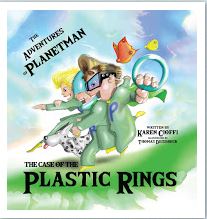By Karen Cioffi
Writing is a personal experience. Each writer faces his or her own obstacles and processes. But, one common aspect of writing is it always starts with an idea.
You may take that idea and turn it into an outline. You then take your outline and sprinkle it with letters and words and watch it grow. Words turn into sentences, sentences into paragraphs, and paragraphs into chapters.
The journey can take months and even years.
It's the love of writing, the love of your story, and the hope of publication keep you dedicated.
Then the day finally arrives. Your manuscript is complete. The query letter is ready. All you have to do is submit, submit, and submit again.
But, hold on a minute.
Have you gone over all the necessary steps to ensure your manuscript is actually ready to be submitted to a publisher or agent?
There are eight steps that every writer, especially those new to the business of writing, should follow before submitting a manuscript:
1. Rewrite, rewrite, rewrite. Then self-edit your story until it’s the best it can be.
2. Make sure you belong to a critique group in your genre and submit your manuscript to them.
3. Revise your story again taking into account the critiques you received.
Here you want to use common sense in regard to which critiques you listen to. If all your critique group members tell you a particular section of your children’s story isn't age appropriate, listen.
If one member tells you he/she doesn’t like the protagonist’s name, use your own discretion.
4. Resubmit the manuscript to the critique group again. See if you’ve revised or removed all the problem areas.
5. Proofread and self-edit the manuscript until you think it’s perfect.
6. Print the manuscript and check it again. You’ll be surprised at the different types of errors that will be found in this format. You should use a colored pen or pencil for these corrections so they’ll be easy to spot later on.
7. Now, it’s time for the final corrections. Give it another go over.
8. Have your manuscript professionally edited.
If you’re questioning why you need to have your manuscript professionally edited after going to the trouble of having it critiqued and worked on it meticulously and endlessly, the answer is simple: An author and a critique group are not a match for the expert eyes of a professional editor.
Did you and your critique group catch all the punctuation errors?
How about knowing when or if it is permissible to use quotation marks outside of dialogue?
Do you know about the Find function on your word program to check for over used words, such as 'was' and 'very.'
What about ellipsis dots, or the over use of adjectives and adverbs?
This is just the tip of the iceberg.
Isn’t it understandable why it’s important to take that extra step, and yes, expense, to have your manuscript edited?
If you’re undecided, ask the professional writers you know if they recommend it. You can also ask if they could recommend a qualified and affordable editor.
The powers that be, editors, agents, reviewers, and publishers, all know the difference between a professionally edited manuscript and one that is not.
Every house needs a solid foundation, right? Getting your manuscript professional edited is the same thing - it will provide a solid foundation.
The number of authors seeking publishers and/or agents is staggering.
Yet, the number of publishers and agents is limited. If your budget allows, give your manuscript every advantage possible.
One of those advantages is having it professionally edited. It can be the deciding factor in whether your manuscript makes it to the editor’s ‘to read’ pile or the trash pile.
Karen Cioffi is an award-winning children’s author, successful
children’s ghostwriter, and author/writer online platform instructor with WOW! Women on Writing. She is also the founder and editor-in-chief of Writers on the Move.
For more on writing, stop by
Writing for Children with Karen Cioffi.
And, if you’re looking for an easy-read, middle-grade fantasy adventure, check out WALKING THROUGH WALLS.Or, you might be interested in a fantasy picture book geared to bring awareness of our environment to children:
The Case of the Plastic Rings – The Adventures of Planetman



